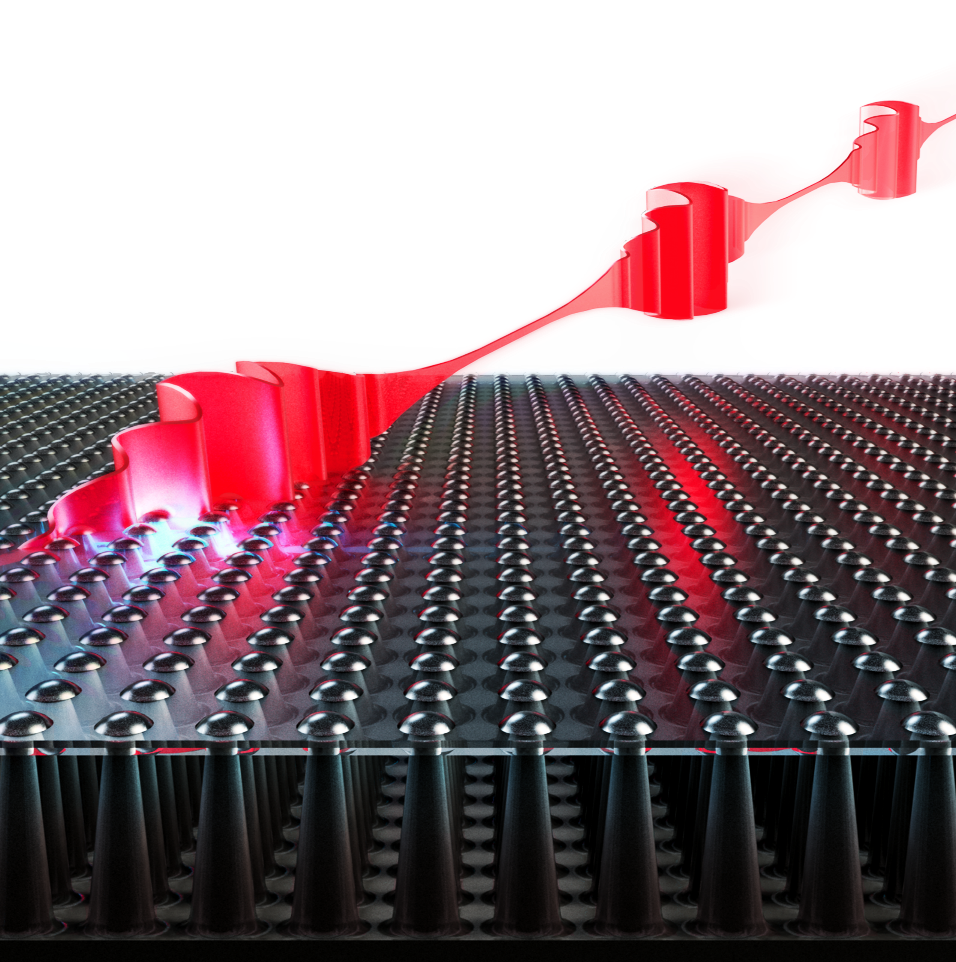
Monitoring cancer at the nano-level
How a new quantum sensor could improve cancer treatment

How a new quantum sensor could improve cancer treatment
By Stephanie Longeway University RelationsThe development of medical imaging and monitoring methods has profoundly impacted the diagnosis and treatment of cancer. These non-invasive techniques allow health care practitioners to look for cancer in the body and determine if treatment is working.
But current techniques have limitations; namely, tumours need to be a specific size to be visible. Being able to detect cancer cells, even before there are enough to form a tumour, is a challenge that researchers around the world are looking to solve.
Researchers at the University of Waterloo’s Institute for Quantum Computing (IQC) have developed a quantum sensor that is promising to outperform existing technologies in monitoring the success of cancer treatments.
 Artist's rendering of the interaction of incident single photon pulses and a tapered semiconductor nanowire array photodetector.
Artist's rendering of the interaction of incident single photon pulses and a tapered semiconductor nanowire array photodetector.
“A sensor needs to be very efficient at detecting light,” explains principal investigator Michael Reimer, an IQC faculty member and professor in the Faculty of Engineering. “What’s unique about our sensor is that the light can be absorbed all the way, from UV to infrared. No commercially available device exists that can do that now.”
Current sensors reflect some of the light, and depending on the material, this reflection can add up to 30 per cent of the light not being absorbed.
This next-generation quantum sensor designed in Reimer’s lab is very efficient and can detect light at the fundamental limit — a single photon — and refresh for the next one within nanoseconds. Researchers created an array of tapered nanowires that turn incoming photons into electric current that can be amplified and detected.
When applied to dose monitoring in cancer treatment, this enhanced ability to detect every photon means that a health practitioner could monitor the dose being given with incredible precision — ensuring enough is administered to kill the cancer cells, but not too much that it also kills healthy cells.
Reimer published his findings in Nature Nanotechnology in March and is now working on a prototype to begin testing outside of his lab. Reimer’s goal is to commercialize the sensor in the next three to five years.
“I enjoy the fundamental research, but I’m also interested in bringing my research out of the lab and into the real world and making an impact to society,” says Reimer.
He is no stranger to bringing quantum technology to the marketplace. While completing his post doctorate at the Delft University of Technology in The Netherlands, Reimer was an integral part of the startup, Single Quantum, developing highly efficient single-photon detectors based on superconducting nanowires.
Reimer’s latest sensor has a wide range of applications beyond dose monitoring for cancer treatments. The technology also has the ability to significantly improve high-speed imaging from space and long-range, high-resolution 3D images.
“A broad range of industries and research fields will benefit from a quantum sensor with these capabilities,” said Reimer. “It impacts quantum communication to quantum lidar to biological applications. Anywhere you have photon-starved situations, you would want an efficient sensor.”
He is exploring all industries and opportunities to put this technology to use.
After earning his undergraduate degree in physics at the University of Waterloo, Reimer moved to Germany to play professional hockey. While taking graduate courses at the Technical University of Munich, he met a professor of nanotechnology who sparked his interest in the field.
“I played hockey and science was my hobby,” says Reimer. “Science is still my hobby, and it’s amazing that it is now my job.” Reimer went on to complete his PhD at the University of Ottawa/National Research Council of Canada, and turned his attention to quantum light sources. Reimer is an internationally renowned expert in quantum light sources and sensors. The idea for the quantum sensor came from his initial research in quantum light sources.
“To get the light out from the quantum light source, we had to come up with a way that you don’t have reflections, so we made this tapered shape. We realized that if we can get the light out that way we could also do the reverse — that’s where the idea for the sensor came from.”

Read more
The very first computational human kidney model can help scientists better understand the effectiveness of the drugs we consume

Read more
Waterloo’s Artificial Intelligence Institute joins Microsoft Canada to harness AI for Good

Read more
Waterloo students’ capstone design project nationally recognized for overcoming accessibility barriers
The University of Waterloo acknowledges that much of our work takes place on the traditional territory of the Neutral, Anishinaabeg, and Haudenosaunee peoples. Our main campus is situated on the Haldimand Tract, the land granted to the Six Nations that includes six miles on each side of the Grand River. Our active work toward reconciliation takes place across our campuses through research, learning, teaching, and community building, and is co-ordinated within the Office of Indigenous Relations.